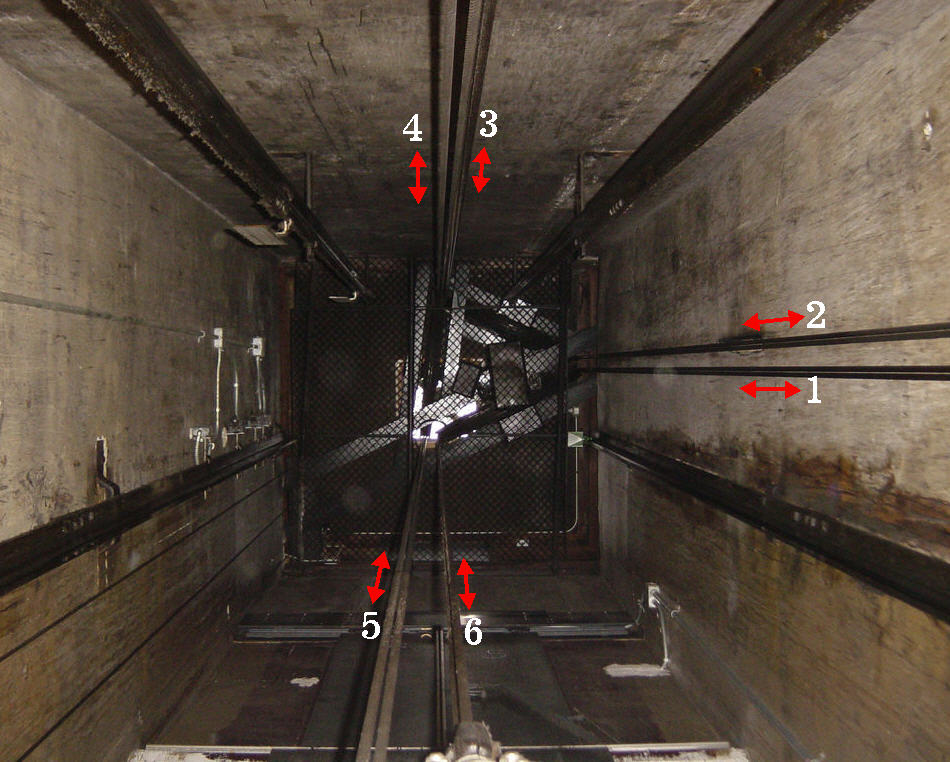What Is This?
Return to the What Is This? - Archive
Return to elevatorbob's Elevator Pictures
Martin Degré of Ascenseur Élévapro, Inc. - Montréal, Québec, Canada What is This? questions correctly...my explanation attempts to do so.
Contest Rules
You have to explain the following image to me...1 - the type of elevator2 - whether a passenger or freight elevator3 - whether a basement or overhead machine4 - why 6 pairs of ropes, how are they related to each other and what is their function
As I See It
This is my explanation of the What is This? image
So I am saying that this is a basement winding-drum machine equipped with car and drum counterweights. I am guessing it is a passenger car because of the type of hoistway doors and the hardware attached to them. In the "old days" winding-drum machines were used for passenger service. ASME A17.1 still does allow winding-drum machines but only for freight service. (See ASME A17.1-2000 2.24.1 for travel, rated speed, and counterweight restrictions.)total weight of the car counterweight now being greater than the weight of the car. What is This? image
Lucas Safety Clamp This image and the explanation above and below are "borrowed" from the wonderful bookelevatorbooks.com .
"This device consists of a case C and a wedge W drop forged in two identical halves so that existing rope attachments need not be disturbed for installation. Case C is mounted on the car crosshead above the hoist-rope sockets and bolt connections, by yoke bolts and extension rods R . Compression springs S support case C over the free-floating wedge W , which bolts directly to the rope inside case C but is not in contact with it, allowing the rope its original free movement. W moves up against case C as the weight of the car is taken by the clamp. The maximum drop of 1.25 in. is so slight as not to disturb passengers in the car. H permit the inspector to see the condition of the rope at the socket easily. When the clamp is installed a red line on the wedge is matched with the lower hole in the case. When the line leaves its set position it gives warning of pending failure of the rope, which can then be resocketed before failure occurs."
~
I might also add that I recall a similar device that was equipped with an electrical switch that would indicate when the wedge W moved into the case C - indicating a pending failure. The contacts in this switch would be wired into the circuitry to either prevent operation of the elevator after the next stop or stop it immediately when the contacts are in the open position. I have never seen this device - I only read about it but I don't remember where!
Three Sheaves What is This? sheaves above
E-mail me a link, image, suggestion, or comment!
Top of Page
Bob Desnoyers Elevator & Escalator Inspections, Inc.
Vertical Transportation Consultants & Inspectors
State of California - Conveyance - Authority Having Jurisdiction Site Map
Return to elevatorbob's Elevator Pictures
Vertical Transportation Authorities Having Jurisdiction
Bob Desnoyers




![]()
![]()
![]()
 E-mail me a link, image, suggestion, or comment!
E-mail me a link, image, suggestion, or comment! 
